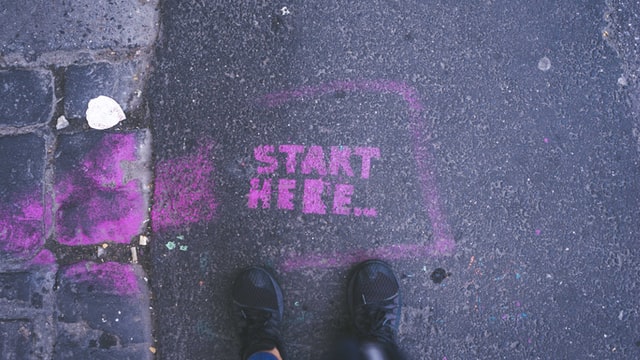We all want to change our lives for the better. However, there’s no shortcut to improving our lives, no matter how much we all wish there could be. Getting started isn’t easy, but taking the step with one change can set you on a path to more happiness. So where do you start? Let’s take a look at how just one habit change can improve your life.
Why Only One Habit?
You might be tempted to move fast, change everything and just go. The reality is that too many big changes too fast will likely cause more harm than good. Instead, best-selling author James Clear recommends that you should only focus on one change of habit at a time if you want something to really stick. According to Clear, the best move you can make is to pick something called a “keystone habit.” It’s this habit that will help pull the rest of your life into line.

The likelihood is that right now you may find yourself in a place where anxiety is high, work pressure is high and you just feel like the world is crashing in around you. Watching videos on YouTube on how to be more productive will only get you so far – the same with time management techniques. All of these are little pieces that can help, but to see ripple effects with a change of habit, the change needs to be big.
Choosing the Right Habit
As Clear points out, something like fitness can really have an impact on many facets of your life. For example you start biking, running or lifting weights. The right habit can cross over into so many different aspects of how you live and work. In the case of fitness, starting to run or bike will likely mean you will want to start getting up earlier. Your sleep habits will improve so you can ensure you have a proper night’s sleep to handle the next day. Once you begin sleeping better and waking up earlier, another secondary benefit of this change of habit will be healthier eating.

The health benefits of running or biking will come faster if you are eating healthier. As you eat healthier, you’ll find foods that can help your memory and give you more energy. This brings you nutritional benefits from your fitness habit. Each of these are cascading into different aspects of your life, and all of those aspects are going to provide you with both mental and physical improvements to your health.
The same can be said for something like finance. Take one step to start managing your money better and smarter financial habits will start falling into place. Stop buying Starbucks, for instance, and as you start to save, you might turn to other areas of your life where you can cut back. The money you save could be put toward a night on the town or for a dream vacation.
Don’t Move Too Fast
The biggest caution is to not move too fast or try to do too much. That’s why introducing one change of habit at a time is the most successful. After the first habit is introduced and properly integrated into your life, introduce another. Getting started is the hardest part, and that’s where the focus should be. Trying to include more is only going to get you into trouble with each habit likely to fail. If you want to run five miles, start small and build up, as there is a good chance you won’t be able to run five miles, if it’s something new for you.
The reasoning behind a change of habit is for behavior to become automatic. That requires much repetition. Trying to add too many habits at one time would all but eliminate the likelihood that you would develop that automatic behavior. Ultimately, the goal is to do something that improves your life, and by trying to move too fast or do too much, you will likely do more harm than good to your stress levels.
How to Start

Choosing the habit you want to start is easy, but getting started is more challenging. The following are some quick and easy steps to help set you on the right path.
- Unsurprisingly, you need to start by picking your one habit – exercise or finances or anything in between.
- Make a plan on how you will continue implementing this habit. In the case of fitness, set a schedule to integrate exercise into your daily life.
- Choose “where” you will be making this change of habit. Maybe you have exercise equipment your home or there is a running/biking trail by your house.
- When will you be doing it? Like creating a schedule, you need to be sure you carve out time to ensure you stay on track.
- Look at what you have accomplished after one month. At this point, you should have enough “data” under your belt to know how well your habit is being performed. Additionally, you should know enough to understand what improvements you need to make.
Historically, there is a belief that it takes 21 days to create a habit. The reality is there is no amount of time that can guarantee you are focused enough on a habit to start a second one. Only you can be the judge of whether or not you are ready.
Final Thoughts
There is no question that small and easy changes can make a huge impact on your life. Jumping into fitness will quickly have ripple effects on the rest of your life and that can be replicated with dozens and dozens of different habit ideas. That most of these require little to no investment makes getting started more about your commitment level than it does any true challenges.
Confused about the difference between change and routine? Read How to Differentiate Between Routines and Habits.

